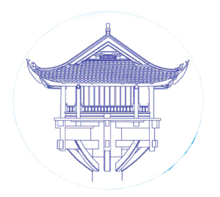“Treating patients with the Heart of the Buddha” Acupuncture and Herbal Medicine course in EIAB
„The purpose of this medicine is actually to restore the patients’ global energy balance and, thus, their naturally healthy condition follows.” summarizes Doctor Blanchard from Colmar, a general practitioner, osteopath, homeopath and Acupuncturist. “What is taught in medical school in the west is primarily palliative medicine. Students learn to merely suppress the symptoms but never to really take care of the patient’s health.”
For the past year Dr. Blanchard has been coming to the EIAB in Waldbröl every two months. He is one of the 10 to 12 participants of this Acupuncture course offered by Dr Do Trong Le in the Hai-Thuong School. Dr Do is a long time disciple of Thich Nhat Hanh (Thay). He fled his home country, Vietnam, in 1979 as a war refugee (boat People) and settled in France where he has been working as an acupuncturist ever since and further developing his Hai-Thuong method. Mindfulness and meditation play a major part in his practise of this medicine. In his treatment, Doctor Do Trong Le enters a deep meditative state which enables him to establish a special connection with the patient. “The golden Heart of the Buddha is there beside me” he says with a smile. Since January 2015, on the recommendation of Thich Nhat Hanh (Thay), he offers teachings on his method to members of the medical profession. Throughout the nine modules of the full course, participants can discover and explore the fundamental theories and concepts of Eastern medicine (including the simplified pulse diagnosis) but also their clinical applications (with on the spot treatment of patients) as well as the practise of mindfulness (relaxation, Qi Gong, meditation). The septuagenarian doctor’s treatments have quite astoundingly positive results and he now feels this to be his duty to pass his discoveries and knowledge on to younger generations. Through this school of acupuncture, the efficacy and wisdom developed with the Hai-Thuong method may expand and bloom in the future. This is another wish his teacher Thich Nhat Hanh (strongly) expressed, that communication and a real dialogue should be established between this ancestral knowledge and wisdom and modern science.
Dr Do’s great inspiration for the development of this method was the 18th century Vietnamese medical practitioner Hai-Thuong. Hai-Thuong was especially renowned for his knowledge and practise of herbal medicine and Dr Do transferred the essential spirit of this knowledge to acupuncture. He thus discovered how the human body is actually a tree, nourished by three main energetic roots/meridians: Kidney, Liver and Spleen-Pancreas.
“With our Hai-Thuong method, we treat patients according to their energetic state.“ says Dr Do “We first focus on restoring their global Yin/Yang balance, then, only do we look into regulating possibly disrupted meridians and affected organs.“ The clinical applications of this theory look quite promising and have already been giving positive results with various types of health problems: asthma, hot flashes due to menopause, arythmia, extrasystoles, high blood pressure and many others problems.
Julie has Parkinson’s disease. She lives near Trier and has been coming to the acupuncture weekend courses for nearly a year now. The treatments she receives here strengthen both her Yin and Yang energies but also activate the functioning of Ren Mai and Du Mai meridians. This in turn strengthens the spinal cord and the brain.
In Multiple sclerosis and Parkinson’s disease patients, the spinal cord is so weakened that the nerves stemming from it cannot convey the energy they should. They in turn become weak and fragile and, as the energy flow is reduced, so movements in the body (managed by the brain and spinal cord) become more difficult. This reactivation of Ren Mai and Du Mai meridians does, in most cases, absolute wonders and Julie is a living example of this. She can now walk normally, she dances every day, does yoga and she feels so good she can hardly believe this method has been working so well.
Seeing how the patients change, how they feel so good, so fast, is a great driving force for the participants of the course. As Dr Do often points out, they also experience the fact that “the happiness of our patients becomes our happiness”.
This modest yet very lively doctor has yet set new goals to his actions and research: developing and improving collaboration with scientists to tackle together difficult diseases such as cancer, Parkinson’s disease, Alzheimer, etc. The French-Vietnamese doctor also likes to use images and in one of these he compares the human brain of an Alzheimer patient with a room in which only half of the light bulbs would be turned on. What happens when the energy flow is restored to its normal healthy state? All the bulbs suddenly light up and the evertyhting in the room can be seen clearly again.
Barbara Buggisch – EIAB Newsletter / May 2016
